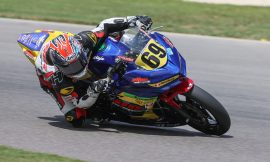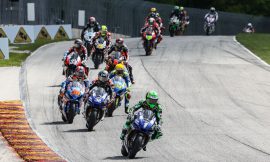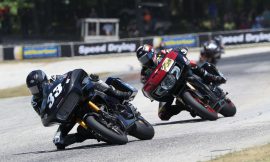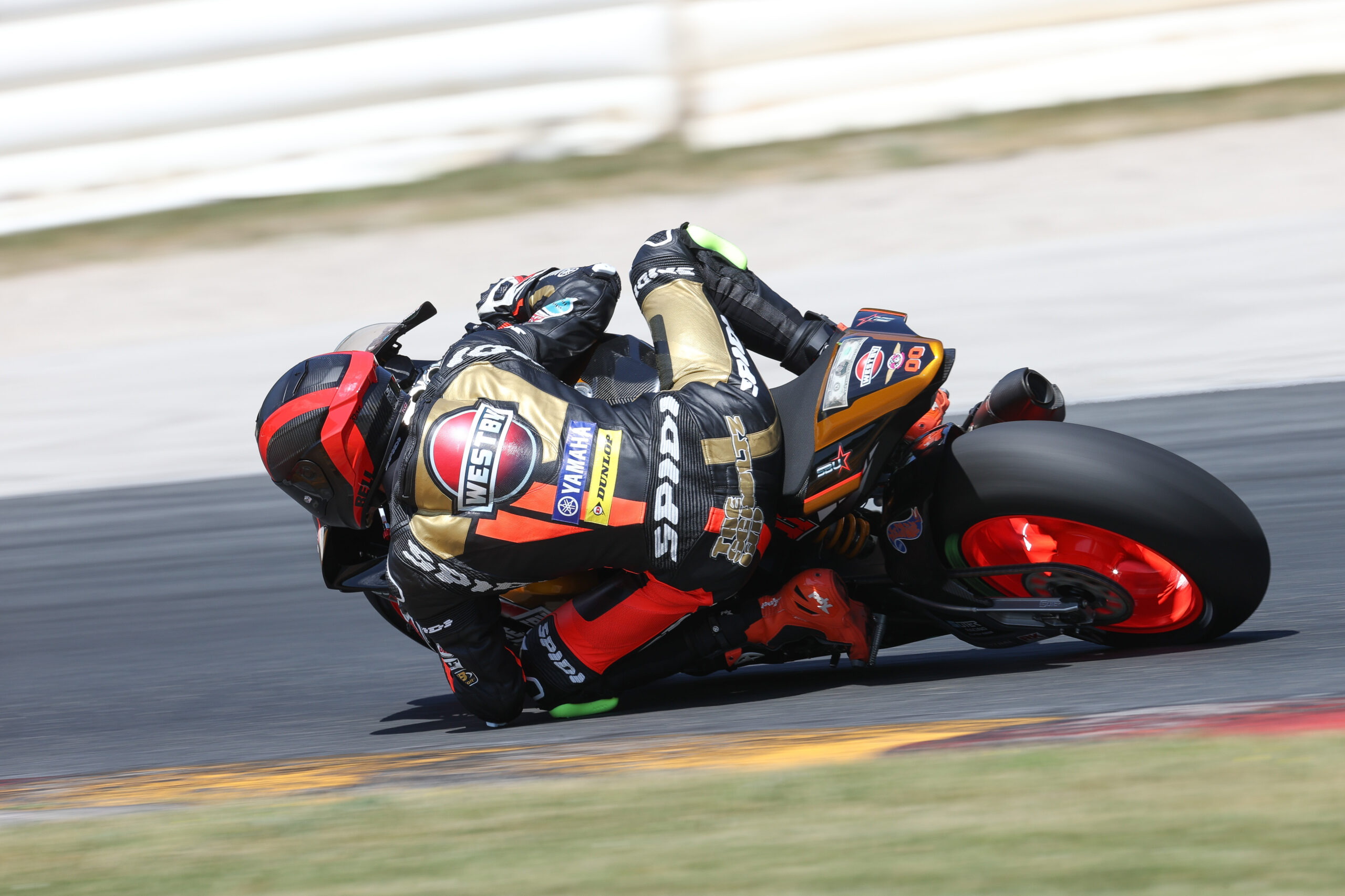
In 1998, German author Bernt Spiegel wrote a best-selling book called The Upper Half of the Motorcycle. Originally written in German with multiple editions and printings to its credit, it was so popular that it was translated into English in order to make its message available to a wider audience.
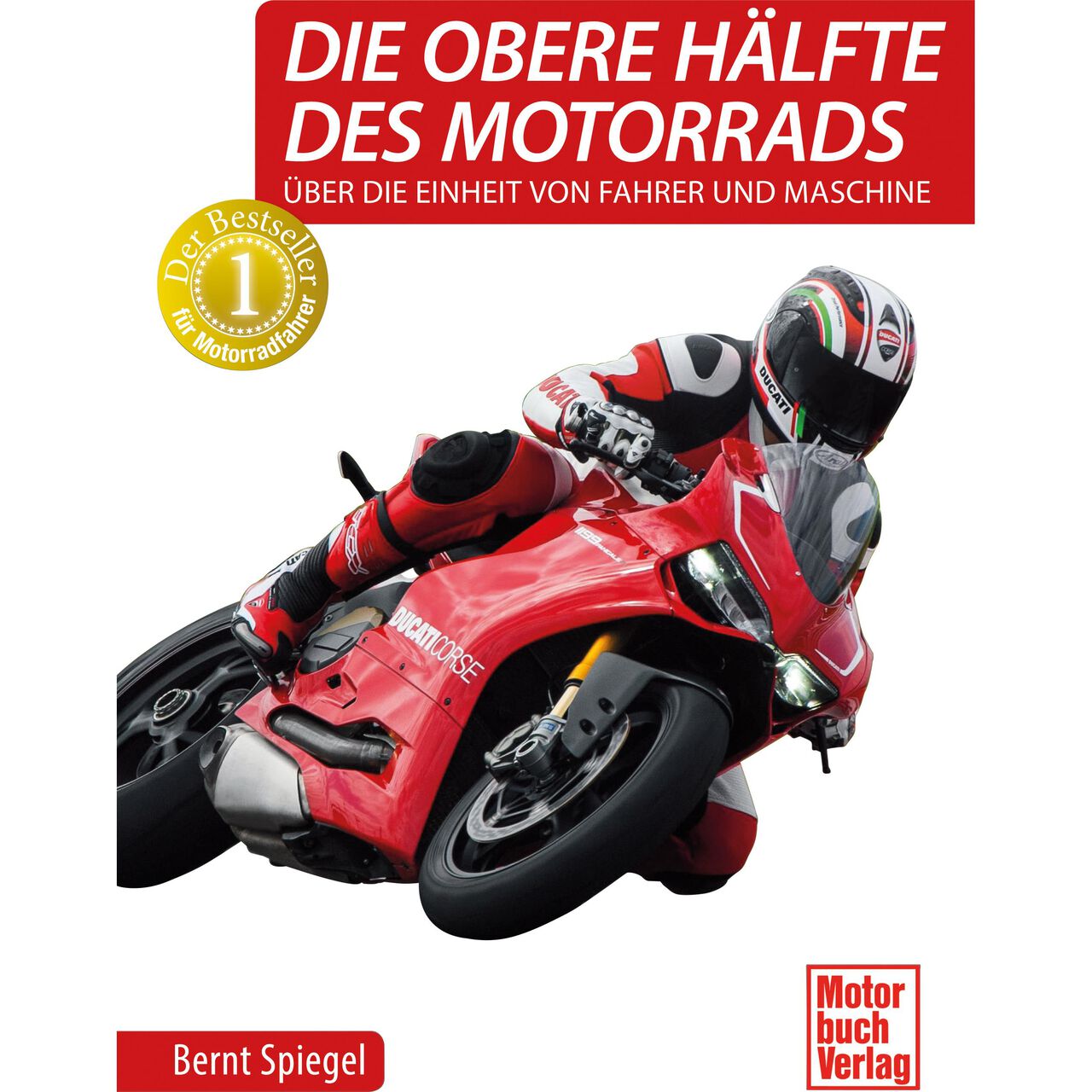
Spiegel presented a metaphor that a motorcycle and its rider are a single unit, and the rider is the upper half of that unit. He then used elements of anthropology, psychology, biology, physics, and other disciplines to analyze the theory and function of the motorcycle/rider single unit.
Operating a motorcycle is a junction where people become so adept at riding that the machine becomes an extension of themselves. Therefore, the ultimate goal for motorcycle racers is the complete integration of the human/machine interface and subsequent skill development to the point of absolute perfection.
When riding a motorcycle at speeds greater than about 15 miles per hour, leaning the motorcycle over in the direction of the turn is a critical maneuver. But, if the very act of turning a motorcycle by leaning it over is so simple, why do we have a natural tendency to resist leaning?
According to Spiegel’s book, throughout human beings’ two-legged existence, we have developed an internal mechanism that allows us to lean a motorcycle over, but only up to a certain point. That point, Spiegel claims, is found throughout nature, and it is 20 degrees of lean. Whether it’s a baseball player running around the bases; a football running back or basketball point guard making a quick cut towards the goal; a cyclist swiftly turning a corner; or a polo player, jockey, or rodeo barrel racer rounding a barrel, the angle of lean is always right around 20 degrees.
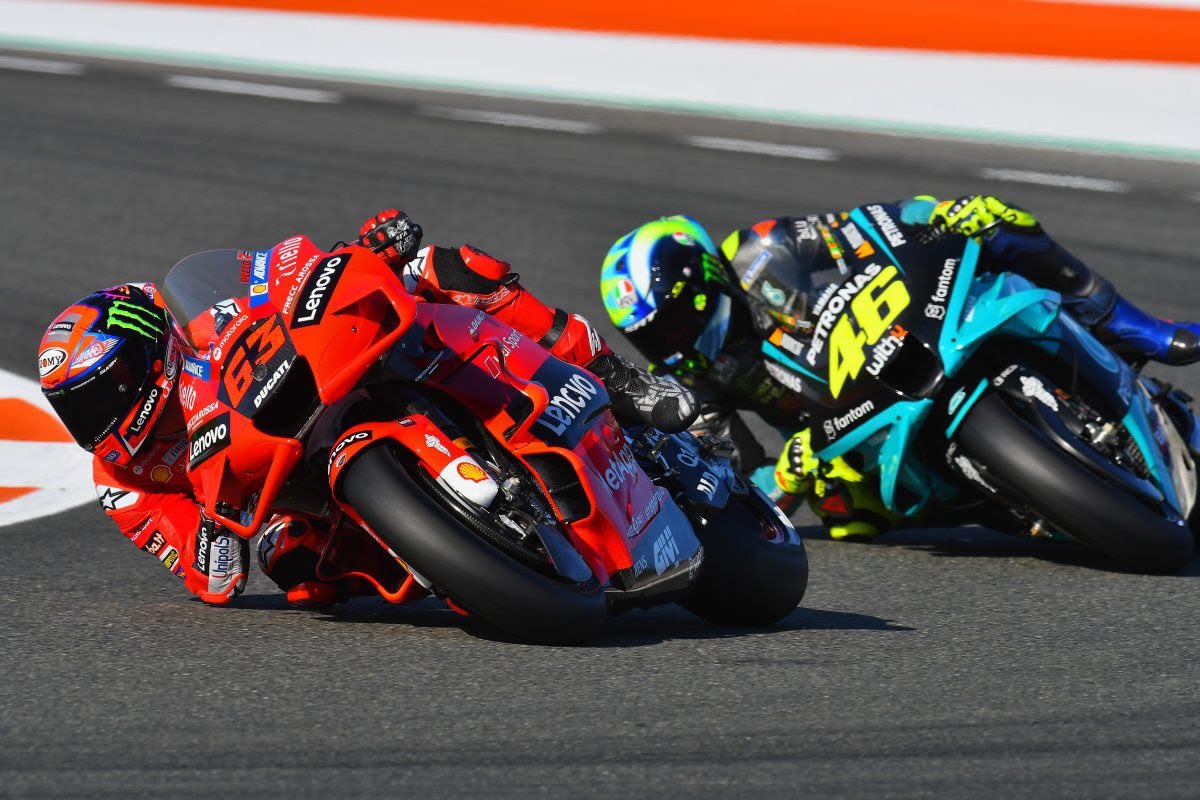
For motorcycle road racers, however, the angle of lean is much greater than 20 degrees. In fact, MotoGP bikes–which have the most ground clearance and use tires with the most grip on the world’s smoothest racetracks–produce 65 degrees of lean angle. That’s a full 45 degrees of additional lean beyond the 20 degrees at which human beings are comfortable leaning in turns.
So, why is maximum lean angle important in motorcycle road racing? The answer is simple: it unlocks maximum speed potential. The farther you can lean a road racing motorcycle over, the higher the corner speed you can achieve. And, in a general sense, the higher your corner speed, the faster your lap times.
But even MotoGP racers don’t ride around corners at the exact same lean angle every time, with their bikes’ hard parts always the same precise distance from the track’s surface. As their speeds change from corner to corner, and depending on whatever situation they’re in, so will their lean angle.
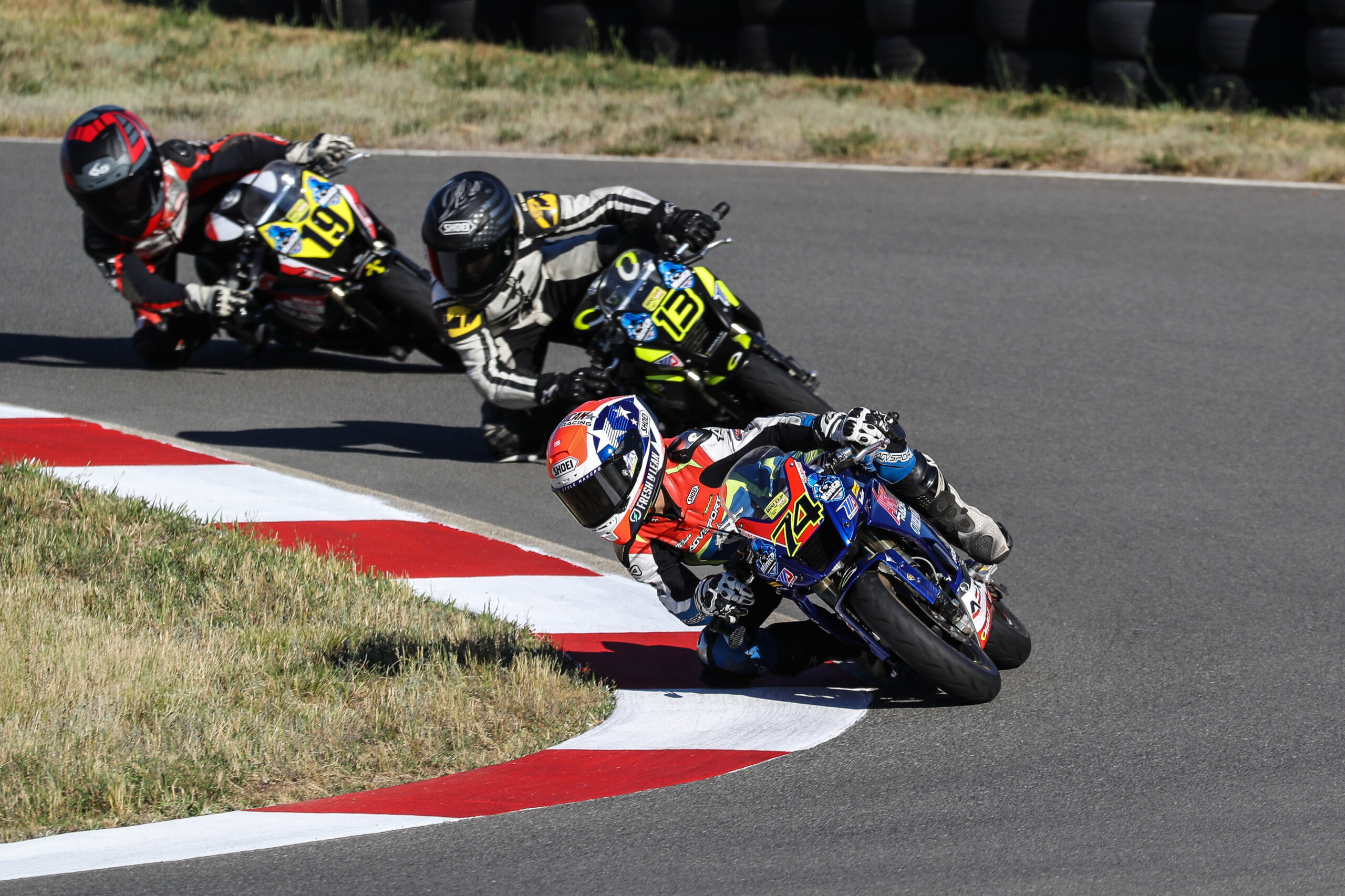
One thing that’s universal, whether it’s MotoGP, World Superbike, or our own MotoAmerica road racers competing in the Mini Cup by Motul or SportbikeTrackGear.com Junior Cup, Twins Cup or Supersport, Stock 1000 or HONOS Superbike, or even the Mission King Of The Baggers Championship, lean angle is the key to winning, and it’s all a matter of degrees.
To purchase tickets for all MotoAmerica events, click HERE
For information on how to watch the MotoAmerica Series, click HERE
For the full 2022 MotoAmerica Series schedule, click HERE






